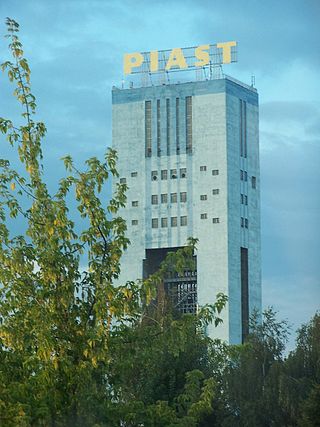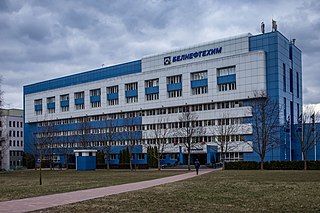Related Research Articles

The Russian Revolution was a period of political and social change in Russia, starting in 1917. This period saw Russia abolish its monarchy and adopt a socialist form of government following two successive revolutions and a civil war. It can also be seen as the precursor for the other revolutions that occurred in the aftermath of World War I, such as the German Revolution of 1918–1919. The Russian Revolution was one of the key events of the 20th century.

The Russian Revolution of 1905, also known as the First Russian Revolution, was a revolution in the Russian Empire which began on 22 January 1905 and led to the establishment of a constitutional monarchy under the Russian Constitution of 1906, the country's first. The revolution was characterized by mass political and social unrest including worker strikes, peasant revolts, and military mutinies directed against Tsar Nicholas II and the autocracy, who were forced to establish the State Duma legislative assembly and grant certain rights, though both were later undermined.

Strike action, also called labor strike, labour strike in British English, or simply strike, is a work stoppage caused by the mass refusal of employees to work. A strike usually takes place in response to employee grievances. Strikes became common during the Industrial Revolution, when mass labor became important in factories and mines. As striking became a more common practice, governments were often pushed to act. When government intervention occurred, it was rarely neutral or amicable. Early strikes were often deemed unlawful conspiracies or anti-competitive cartel action and many were subject to massive legal repression by state police, federal military power, and federal courts. Many Western nations legalized striking under certain conditions in the late 19th and early 20th centuries.

A sit-down strike is a labour strike and a form of civil disobedience in which an organized group of workers, usually employed at factories or other centralized locations, take unauthorized or illegal possession of the workplace by "sitting down" at their stations. By taking control of their workplaces, workers engaged in a sit-down demonstrate their power, build solidarity among themselves, prevent the deployment of strikebreakers or removal of industrial equipment, and cause cascading effects on the chain of production within and between factories. However, sit-down strikes are illegal in the vast majority of countries, complicating their use.
The Gdańsk Agreement was an accord

The Lena Massacre or Lena Execution refers to the shooting of goldfield workers on strike in northeast Siberia near the Lena River on 17 April [O.S. 4 April] 1912.

The Novocherkassk massacre was a massacre carried out by the Soviet army and KGB against unarmed civilians who were rallying on 2 June 1962 in the Soviet city of Novocherkassk. A few weeks prior to the massacre, workers at the Electro Locomotive Novocherkassk plant (NEVZ) had organized a peaceful labor strike. Government forces killed 26 people, according to the official account, in the massacre.

The Imperial Porcelain Factory, also known as the Imperial Porcelain Manufactory, is a producer of hand-painted ceramics in Saint Petersburg, Russia. It was established by Dmitry Ivanovich Vinogradov in 1744 and was supported by the Russian tsars since Empress Elizabeth. Many still refer to the factory by its well-known former name, the Lomonosov Porcelain Factory.

The Vyborg Side is a 1939 Soviet drama film directed by Grigori Kozintsev and Leonid Trauberg, the final part of trilogy about the life of a young factory worker, Maxim. The film was also released in the United States under the title New Horizons.

The 1981 strike at the Piast Coal Mine in Bieruń was the longest underground protest in the postwar history of Polish mining, and the longest strike of the martial law in Poland. It began on December 14, 1981, one day after introduction of the martial law, and ended on December 28, when approximately 1,000 protesting miners emerged from the mine. They spent two weeks underground, including Christmas, and ended the protest after the government guaranteed their safety.
The Kreenholm Manufacturing Company was a textile manufacturing company located on the river island of Kreenholm in the city of Narva, Estonia, near the border with Russia. It is situated along the banks of the Narva river, by the large Narva Falls, 16 kilometres (9.9 mi) from the Baltic Sea. It was founded by Ludwig Knoop in 1857, a cotton merchant from Bremen, Germany. At one point, the company's cotton spinning and manufacturing mills were the largest in the world; and Kreenholm was considered in its time to be the most important mill of the former Russian Empire, owning 32,000 acres of land and employing 12,000 people.

The All-Russian Congress of Soviets evolved from 1917 to become the supreme governing body of the Russian Soviet Federative Socialist Republic from 1918 until 1936, effectively. The 1918 Constitution of the Russian SFSR mandated that Congress shall convene at least twice a year, with the duties of defining the principles of the Soviet Constitution and ratifying peace treaties. The October Revolution ousted the provisional government of 1917, making the Congress of Soviets the sole, and supreme governing body. This Congress was not the same as the Congress of Soviets of the Soviet Union which governed the whole Soviet Union after its creation in 1922.

Red Guards were paramilitary volunteer formations for the "protection of the soviet power", as part of the Bolshevik Military Organizations. The Red Guards consisted primarily of urban workers, peasants, cossacks and partially of soldiers and sailors. Red Guards were a transitional military force of the collapsing Imperial Russian Army and the base formations of Bolsheviks during the October Revolution and the first months of the Russian Civil War. Most of them were formed in the time frame of the Russian Revolution of 1917, and some of the units were reorganized into the Red Army during 1918. The Red Guards formations were organized across most of the former Russian Empire, including territories outside the contemporary Russian Federation such as Finland, Poland, Estonia, Ukraine, and others. They were not centralized and were formed by decision of a local political party and local soviet members. By fighting to protect and extend the power of the Soviets, they aided the creation of a new state that would give "all power to the soviets": the Soviet Union.

The New Economic Policy (NEP) was an economic policy of the Soviet Union proposed by Vladimir Lenin in 1921 as a temporary expedient. Lenin characterized the NEP in 1922 as an economic system that would include "a free market and capitalism, both subject to state control", while socialized state enterprises would operate on "a profit basis".

The League of Struggle for the Emancipation of the Working Class (LSEWC) was a Marxist group in the Russian Empire. It was founded in St. Petersburg by Vladimir Lenin, Julius Martov, Gleb Krzhizhanovsky, Anatoly Vaneyev, Alexander Malchenko, P. Zaporozhets and V. Starkov in the autumn of 1895. It united twenty different Marxist study circles, but Lenin dominated the league through the 'central group'. Its main activity was agitation amongst the workers of St Petersburg and the distribution of socialist leaflets to the factories there.
Events from the year 1895 in Russia.
Industrialization in the Russian Empire saw the development of an industrial economy, whereby labor productivity increased and the demand for industrial goods was partially provided from within the empire. Industrialization in the Russian Empire was a reaction to the industrialization process in Western European countries.

Belneftekhim is an association of petrochemical companies in Belarus, subordinated to the Council of Ministers. It manages these companies and regulates several aspects of the petrochemical sector, including setting retail prices for gasoline.

Industry plays an important role in the economy of Belarus. In 2020, industry accounted for 25.5% of Belarusian GDP. Share of manufacturing in Belarusian GDP was 21.3% in 2019. United Nations Economic Commission for Europe described Belarus as having "a well-developed industrial sector and highly skilled workforce". In 2020, 23.5% of the Belarusian workforce was employed in industry. In 2019, total industrial production amounted to 115.7 billion Belarusian rubles ; in 2020, it rose to Br 116.5 billion. Belarusian industry is export-oriented: in 2020, 61.2% of industrial output was exported. The most important sector is food industry. Other well-developed sectors of industry include chemical industry, automotive industry and manufacturing of other machinery equipment.
The Upper Silesia 1980 strikes were widespread strikes, which took place mostly in the Upper Silesian mining cities Jastrzębie-Zdrój, Wodzisław Śląski and Ruda Śląska and its surroundings, during late August and early September 1980. They forced the Government of People's Republic of Poland to sign the last of three agreements establishing the Solidarity trade union. Earlier, agreements had been signed in Gdańsk and Szczecin. The Jastrzębie Agreement, signed on September 3, 1980, ended Saturday and Sunday work for miners, a concession that Government leaders later said cut deeply into Poland's export earnings.
References
- ↑ "Yaroslavl". Star Travel. n.d. Archived from the original on 11 March 2018. Retrieved 10 March 2018.
There were about 70 enterprises in the city. One of them was the biggest in Russia Yaroslavl Great Manufacture exporting its linens to Europe. Yaroslavl was also famous for its white-wash and leather.
- 1 2 Lenin, V. I. (1972). "What Are Fines?". V. I Lenin Collected Works: Volume 2 (1895-1897). Vol. 2. Progress Publishers. pp. 35–36.
- 1 2 King, Greg; Wilson, Penny (2003). The Fate of the Romanovs. Lulu Press. p. 37. ISBN 978-0-471-72797-2.
- ↑ И.В Шильникова, «Экономика и общество древолюйионной России,» 57 http://www.hist.msu.ru/Labs/Ecohist/OB12/shilnikova.pdf